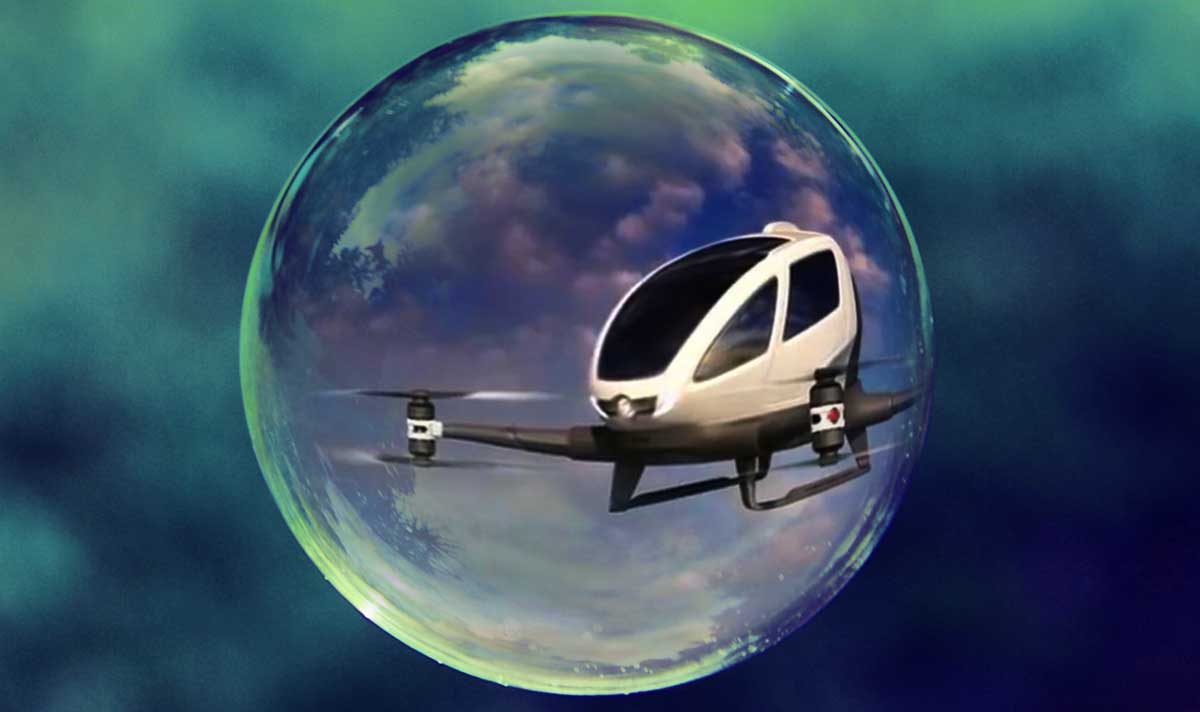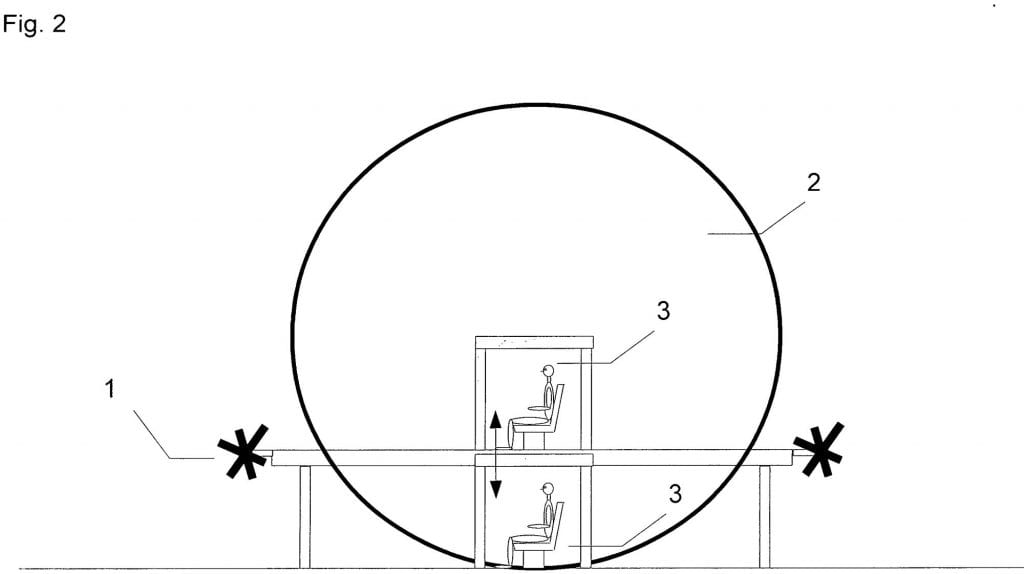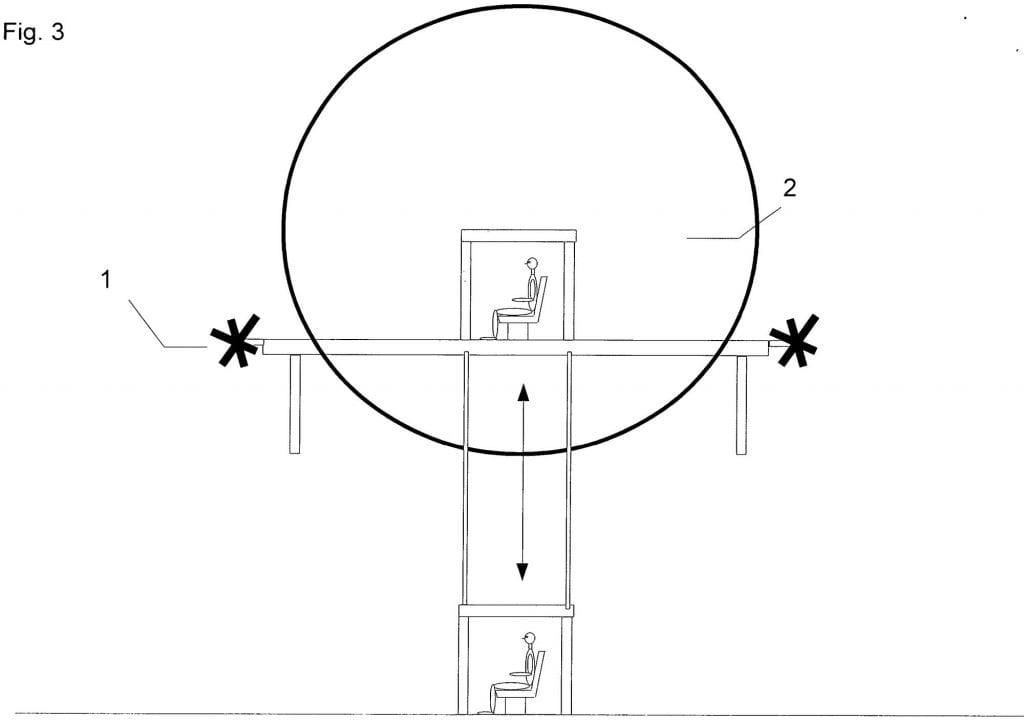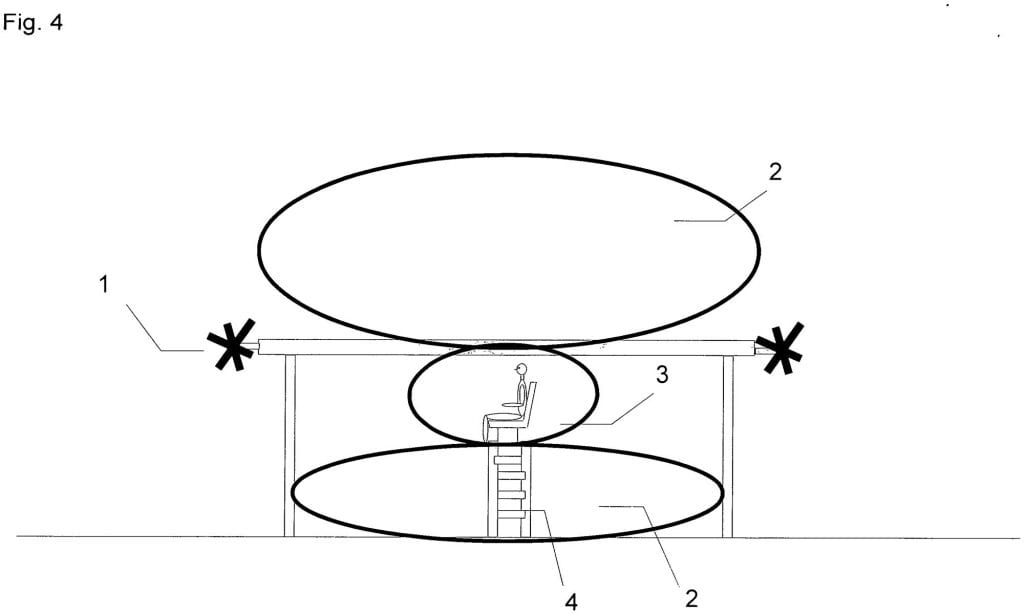
News
Bosch Wants to Make Hybrid Passenger Drones That Fly Inside Air Balloons
A patent has been issued to German engineering and electronics giant Bosch that shows an air taxi surrounded and protected by a new type of safety system for drones, namely a helium- or hydrogen-filled balloon.
Known for high quality auto parts, home appliances and tools, the company was granted the patent under the name of Christian Danz who is Vice President of the company, earlier this month.
Consumer trust for autonomous vehicles both on the ground and in the air is at a low, as reported by the AAA last week.
Australian startup and innovation investor Steve Baxter said just days ago that regarding the safety of autonomous travel, the ‘hard part is convincing people that we will have 10,000 of these things flying above our heads and less of us will die in transport because of it.”
Even Elon Musk has weighed in on the bad press that autonomous vehicles have been getting, insisting that crashes by human-driven vehicles get next to no coverage compared to autonomous vehicles despite being responsible for far more many deaths.
It’s super messed up that a Tesla crash resulting in a broken ankle is front page news and the ~40,000 people who died in US auto accidents alone in past year get almost no coverage https://t.co/6gD8MzD6VU
— Elon Musk (@elonmusk) May 14, 2018
Could Bosch’s proposed safety system have the potential to change the public’s view of driverless cars and aircraft?
The patent in question is titled ‘Hybrid flying system‘ and describes a system which has its sights set on making passenger air flight, at least, safer.
It discusses current autonomous ‘reinforced passenger air systems’ (also called passenger drones) such as made by Chinese dronemaker EHANG, Moscow startup HoverSurf, and VTOL jet developer Lilium, and the dangers posed by errors in flight systems of these vehicles.
“The problem is now that flight systems may crash in the event of an error, for example when mechanical components such as the rotors or electro-mechanical parts such as the rotor-motors or the battery or the control units fail (by system hardware or software error). The resulting risks are known: plane crashes in serious injury or death to the occupants of the aircraft consequence and / or damage to the charge of the flight system,” the patent says.
Parachutes could be an answer to such problems but are impeded by proximity to both the ground and errant rotors.
To address these issues, the patent suggests various embodiments of one concept: to encapsulate or otherwise support the passenger drone inside or below a ‘lighter-than-air module’ filled with a gas such as helium or hydrogen, “that in case of failure of the rotors of the drive module, the hybrid air system including flight occupant and / or charge slowly to the ground sinks.”
Both injury or death to the occupants and damage to the flight system would be avoided or reduced, the patent states.
In the figures accompanying the patent, several embodiments are shown that remind us just a bit of Festo’s FreeMotionhandling ‘bubble drone’ – except unlike Festo’s bubble drone, Bosch also include in their patent a passenger module .
The patent describes the various parts of the light-than-air system:
“The hybrid air system is constructed of three modules ( 1 ): (A lighter-than-air module (2), A drive module (1) And a flight passenger module (3). The flight hybrid system is arranged such that the aircraft passenger module is surrounded by a lighter-than-air module ( 1 ). Thus, the lighter-than-air module has especially if the crash is performed in the event of a crash, an airbag protection system for the flight module occupant and protects the air occupant in the event of a crash at a level below 30 m.“

Figures 2 and 3 show an option for an ‘automatic lowering and pulling up device ‘ in the case of needing to board or disembark while the vehicle is in flight, or there not being enough ground on which to properly land.

Figure 2

Figure 3
In figures 4 and 5, the patent suggests various embodiments wherein the light-than-air modules can be divided into mutually independent modules – presumably lowering risk even more should one module fail.

Figure 4

Figure 5
The last figure (6) depicts a final embodiment that ‘can be switched to an independent and autonomous traveling rolling chassis with electric drive train and 4 wheels and uncoupled and subsequently to the lighter-than-air module and the drive module and to be uncoupled‘, giving the passenger the option of travelling with or without the protective bubble.

Figure 6
While many multirotor passenger drones, such as that made by Volocopter (read our interview with co-founder Alex Zosel here), are in fact designed with redundancy systems already in place, it is easy to imagine how Bosch’s hybrid flying system could reduce the dangers for – and even perhaps increase the trust of – passengers of the not-too-distant-future taking to the air in autonomous taxis and shuttles.


















